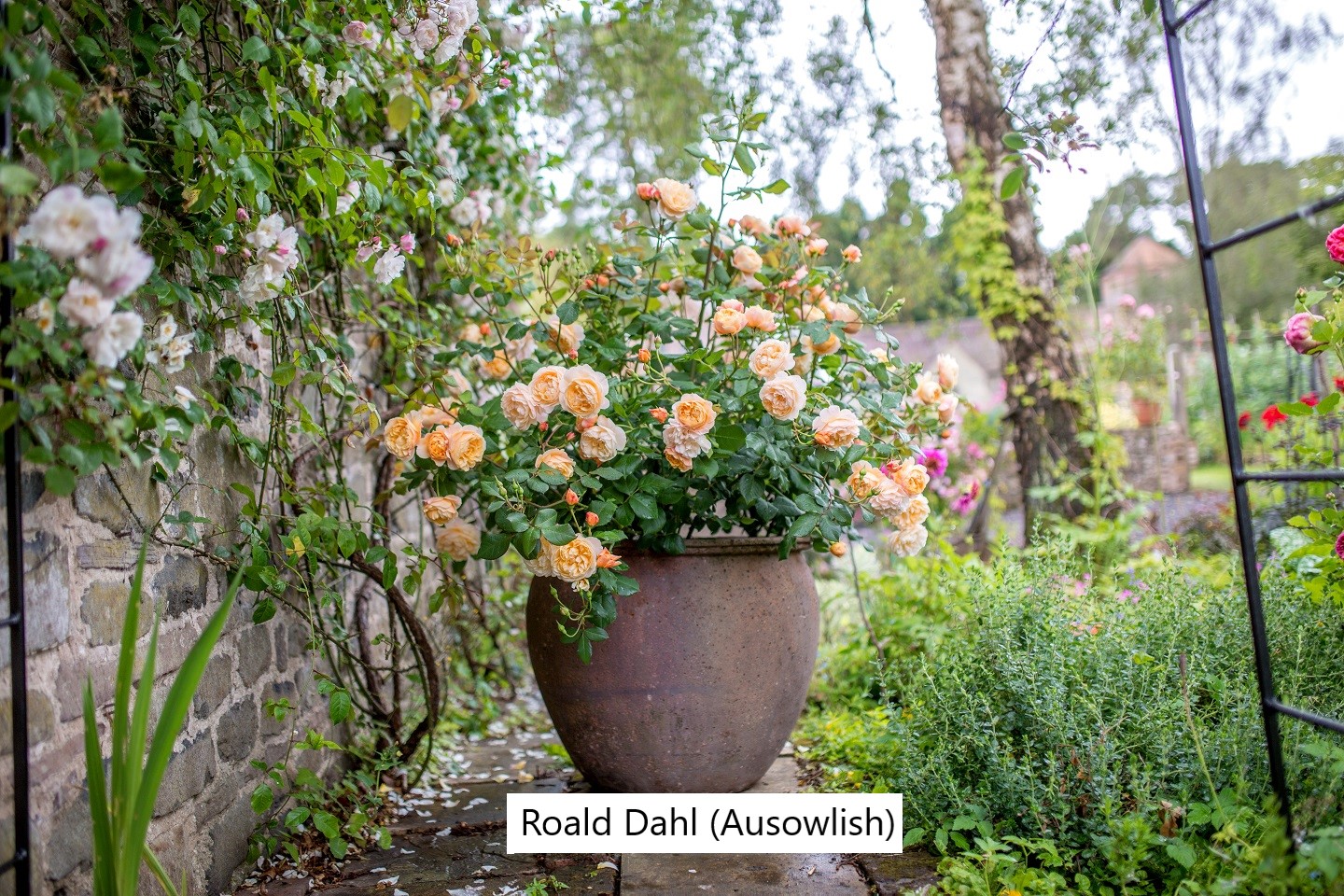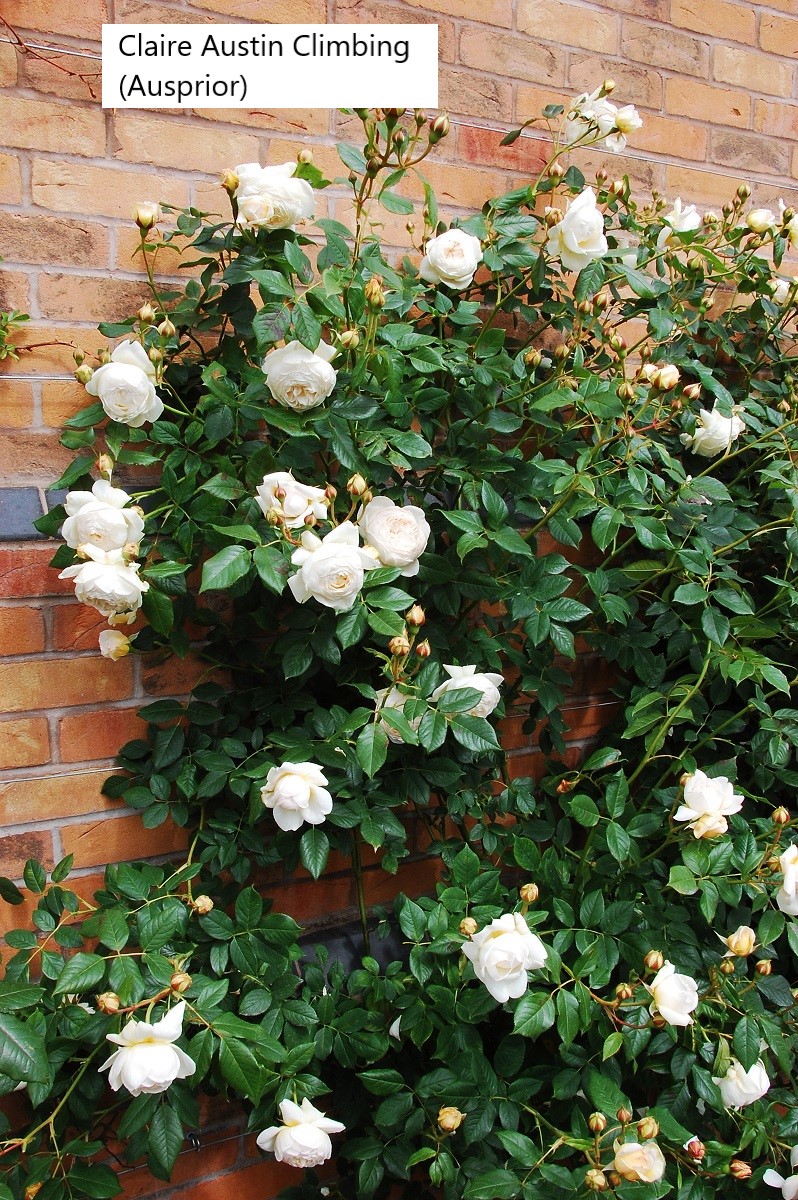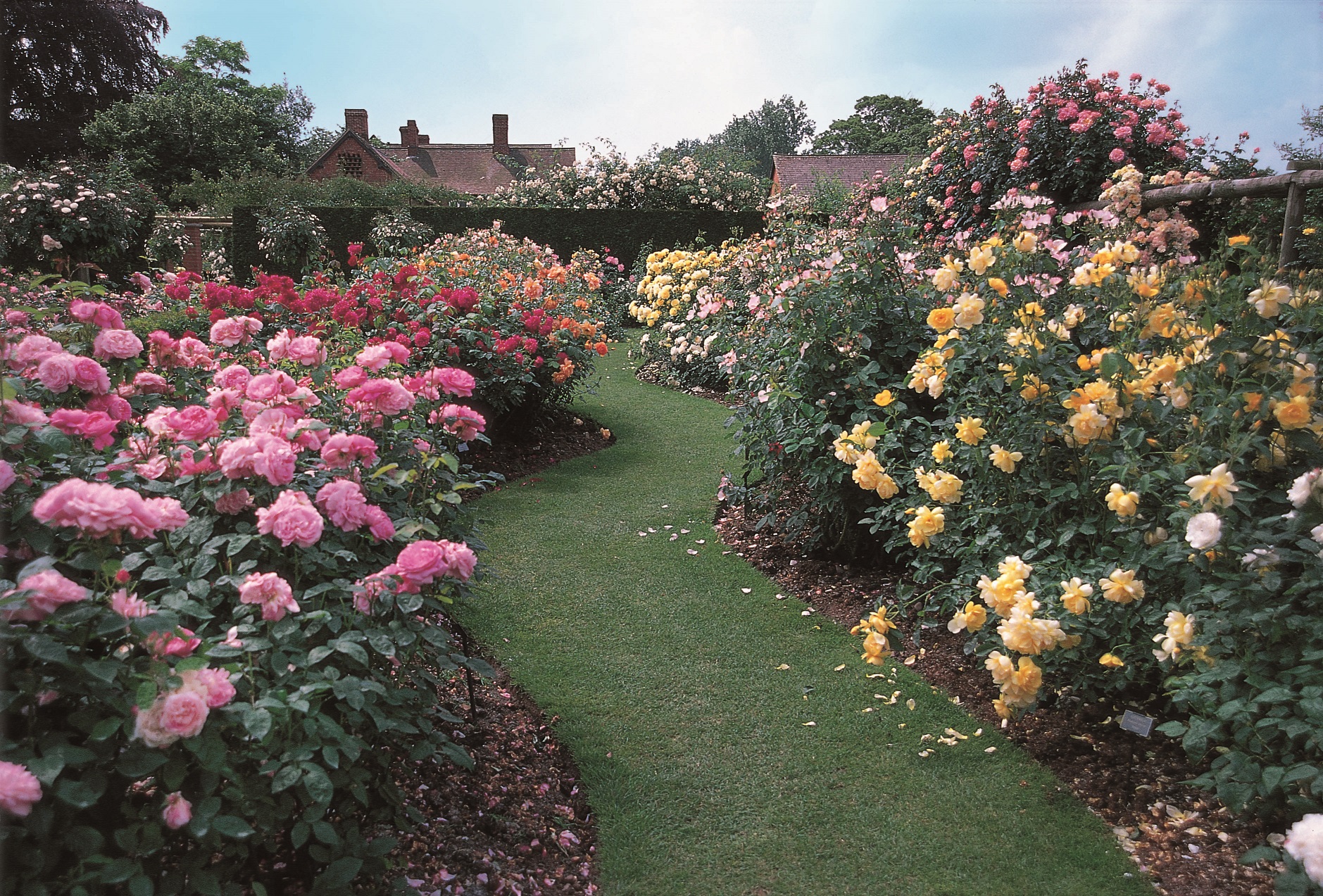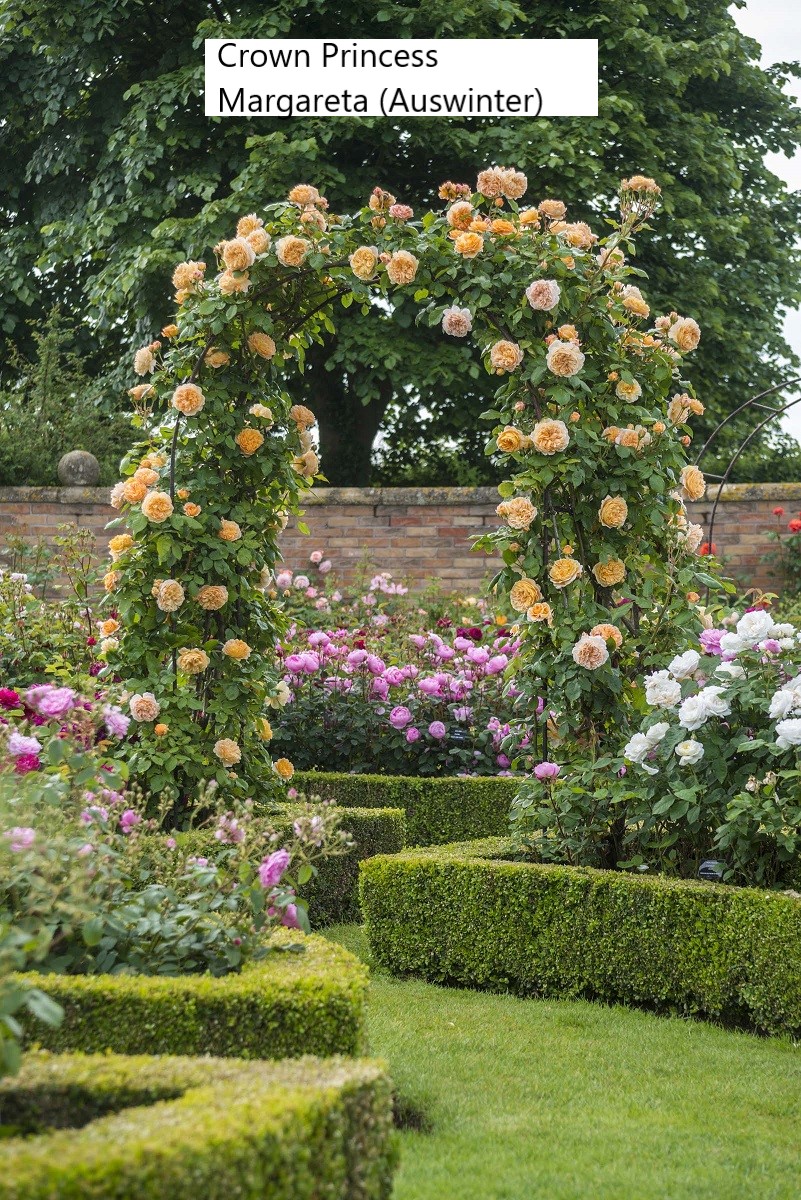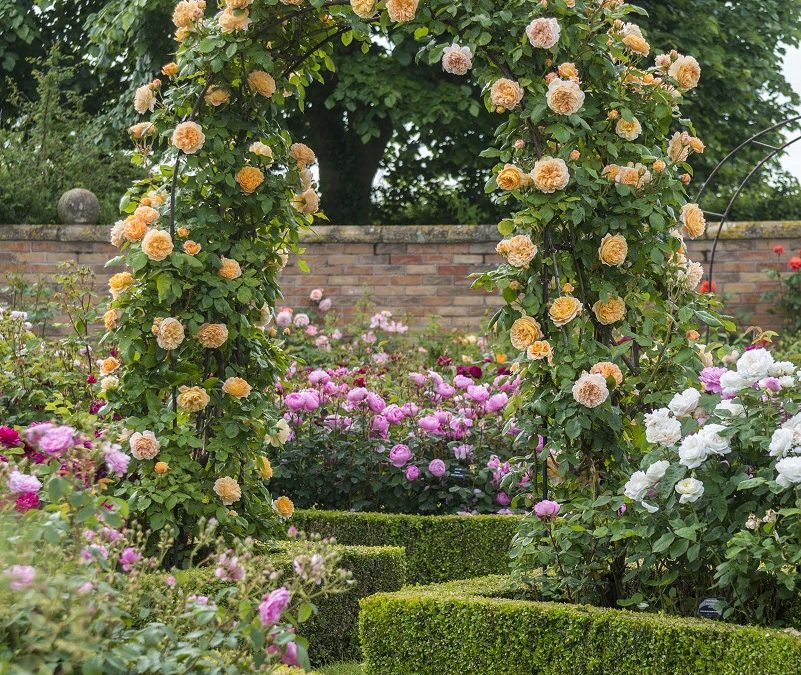Photos by Courtesy of David Austin Roses
Join the David Austin Roses Australia Enews on: https://www.
Though old and modern roses share many of the same characteristics and may all be grown together, some are better for specific purposes than others. If you are just after colour then select the roses that appeal to you but if you want a little more knowledge then this leaflet will help.
Roses can be loosely grouped into a number of categories as follows:
Bush Roses – the most popular form in our gardens developing several stems at ground level. The term ‘bush rose’ includes Hybrid Tea, Floribunda and Grandiflora roses. They are planted 75cm – 1.25m apart depending on their ultimate height.
Hybrid Tea Roses – these are the roses to choose if you are looking for classic, long stemmed, usually perfumed, cut flower roses. Most produce a single perfect bloom on each stem though a few will have several blooms to a stem. These are the classic cut flowers with long pointed buds opening to high centred blooms which last well when cut.
David Austin English Roses – these roses are best described as ‘New Roses in the Old Tradition’. They combine the perfume, variety and charm of old-fashioned roses with the recurrent flowering qualities and wider colour range of modern roses. The majority have strong bushy shapes and can be grown amongst many other garden shrubs.
The newer forms of David Austin Roses have been bred with strong disease resistance in mind.
Some varieties grow quite tall under Australian conditions and are wonderful if grown as ‘Pillar Roses’, ie. small climbers. They also look quite stunning if trained to grow on a fence, lattice or verandah post.
Grandiflora Roses – strong, continuous blooming roses producing clusters of Hybrid Tea like flowers on long, strong stems. The blooms last well in vase or garden.
Floribunda Roses – bushy, shrubby growers. Clusters of flowers on each stem. These make great colour in the garden. They are used wherever a mass of colour is needed eg. as hedges or borders, to line paths, and in large containers. As their name implies they flower abundantly and are quick to repeat from early Spring to late Autumn.
Mini Roses – small flowers, compact growth habit, ideal for borders or pots. You can purchase these as cutting grown plants i.e. not grafted, and these are bushy from the base up. Grafted, or budded varieties have a central stem and the shoots grow from that. Both types flower prolifically although a grafted plant is generally stronger.
Patio Roses – larger flowers than mini, compact growth habit, ideal for pots. These have been developed over recent years and are really quite superb. They present well in the pot and make a truly excellent gift.
Rambling Roses – the most vigorous of the climbing-type roses. They may spread up to 10 metres by producing long, flexible canes and are therefore excellent for covering and highlighting large areas.
Climbing Roses – less vigorous than ramblers tending to put out stiff canes that instinctively grow upwards. To maximise flowering, climbers need to be tied down to a more horizontal position. Great for training on large fences, walls and pergolas. Most climbing roses will need support in the form of wire or trellis. Masonry nails may be needed on brick walls or fences.
Pillar Roses – the third group and least vigorous of the climbing roses. Pillar roses generally flower on canes of varying length giving a ‘fully clothed’ appearance from the ground up.
Standards or Tree Roses – grafted onto a straight stem of varying heights but generally 1 or 1 1/2 metres high. Upright growth habit. Used for a formal effect along drives, amongst shrubs and as hedges. They save space by taking the growth up or away from the ground enabling other plants, such as seedlings or bulbs, to be planted underneath.
Weeping Standards – as above, but on tall standards, 2 or 3 metres high. Weeping habit.
Old World Roses – the term ‘Old World’ is subject to many interpretations but generally they are considered to have been established prior to Hybrid Tea and Floribunda Roses. They are often informal, large bushy plants 2 to 3 metres tall, although some are quite small. There is a limited colour range but flower shapes and perfume are superb.
Groundcover or Landscape – versatile and hardy. Includes Flower Carpet, Magic Carpet™ and Meidiland varieties. Very colourful and long flowering roses – almost continuously in flower from Spring to late Autumn. Ideal for edging a rose or garden bed, border, pathway or can even be used as a low fence. Mainly vigorous growers that can be kept trimmed to nearly any shape you want.
Please ask Garden Centre staff for colour recommendations. They have a large range of roses in stock most of the year. Roses are available in pots, in flower, from late October to around May.
© Siebler Publishing Services
